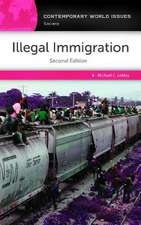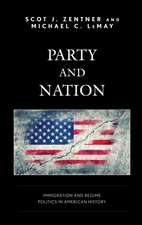Guarding the Gates: Immigration and National Security: Praeger Security International
Autor Michael C. LeMayen Limba Engleză Hardback – 29 sep 2006 – vârsta până la 17 ani
Din seria Praeger Security International
- 18%
 Preț: 334.19 lei
Preț: 334.19 lei - 8%
 Preț: 335.53 lei
Preț: 335.53 lei - 34%
 Preț: 376.10 lei
Preț: 376.10 lei - 46%
 Preț: 443.64 lei
Preț: 443.64 lei - 29%
 Preț: 240.11 lei
Preț: 240.11 lei - 8%
 Preț: 304.56 lei
Preț: 304.56 lei - 34%
 Preț: 373.82 lei
Preț: 373.82 lei - 19%
 Preț: 412.79 lei
Preț: 412.79 lei - 19%
 Preț: 338.42 lei
Preț: 338.42 lei - 18%
 Preț: 335.62 lei
Preț: 335.62 lei - 27%
 Preț: 377.35 lei
Preț: 377.35 lei - 27%
 Preț: 376.75 lei
Preț: 376.75 lei - 18%
 Preț: 336.46 lei
Preț: 336.46 lei - 18%
 Preț: 321.73 lei
Preț: 321.73 lei - 27%
 Preț: 384.51 lei
Preț: 384.51 lei - 18%
 Preț: 320.50 lei
Preț: 320.50 lei - 18%
 Preț: 320.50 lei
Preț: 320.50 lei - 18%
 Preț: 321.35 lei
Preț: 321.35 lei - 24%
 Preț: 420.54 lei
Preț: 420.54 lei - 14%
 Preț: 335.99 lei
Preț: 335.99 lei - 18%
 Preț: 355.82 lei
Preț: 355.82 lei - 18%
 Preț: 319.83 lei
Preț: 319.83 lei - 18%
 Preț: 334.28 lei
Preț: 334.28 lei - 32%
 Preț: 354.48 lei
Preț: 354.48 lei - 14%
 Preț: 335.14 lei
Preț: 335.14 lei - 38%
 Preț: 405.98 lei
Preț: 405.98 lei - 40%
 Preț: 571.34 lei
Preț: 571.34 lei - 18%
 Preț: 321.85 lei
Preț: 321.85 lei - 18%
 Preț: 323.25 lei
Preț: 323.25 lei - 18%
 Preț: 253.28 lei
Preț: 253.28 lei - 40%
 Preț: 571.50 lei
Preț: 571.50 lei - 14%
 Preț: 333.72 lei
Preț: 333.72 lei - 18%
 Preț: 301.73 lei
Preț: 301.73 lei - 19%
 Preț: 352.96 lei
Preț: 352.96 lei - 26%
 Preț: 387.80 lei
Preț: 387.80 lei - 18%
 Preț: 302.77 lei
Preț: 302.77 lei - 14%
 Preț: 333.91 lei
Preț: 333.91 lei - 17%
 Preț: 325.80 lei
Preț: 325.80 lei - 24%
 Preț: 338.58 lei
Preț: 338.58 lei - 34%
 Preț: 414.73 lei
Preț: 414.73 lei - 18%
 Preț: 354.30 lei
Preț: 354.30 lei - 29%
 Preț: 254.29 lei
Preț: 254.29 lei - 18%
 Preț: 354.11 lei
Preț: 354.11 lei - 18%
 Preț: 334.38 lei
Preț: 334.38 lei - 14%
 Preț: 302.68 lei
Preț: 302.68 lei - 18%
 Preț: 322.97 lei
Preț: 322.97 lei - 27%
 Preț: 376.50 lei
Preț: 376.50 lei - 27%
 Preț: 322.81 lei
Preț: 322.81 lei - 27%
 Preț: 382.91 lei
Preț: 382.91 lei - 18%
 Preț: 320.87 lei
Preț: 320.87 lei
Preț: 324.87 lei
Preț vechi: 393.72 lei
-17% Nou
Puncte Express: 487
Preț estimativ în valută:
62.18€ • 67.57$ • 52.27£
62.18€ • 67.57$ • 52.27£
Carte tipărită la comandă
Livrare economică 21 aprilie-05 mai
Preluare comenzi: 021 569.72.76
Specificații
ISBN-13: 9780275992941
ISBN-10: 0275992942
Pagini: 340
Dimensiuni: 156 x 235 x 30 mm
Greutate: 0.66 kg
Ediția:New.
Editura: Bloomsbury Publishing
Colecția Praeger
Seria Praeger Security International
Locul publicării:New York, United States
ISBN-10: 0275992942
Pagini: 340
Dimensiuni: 156 x 235 x 30 mm
Greutate: 0.66 kg
Ediția:New.
Editura: Bloomsbury Publishing
Colecția Praeger
Seria Praeger Security International
Locul publicării:New York, United States
Notă biografică
Michael C. LeMay is Professor Emeritus and was Director of the National Security Studies program at California State University-San Bernardino. He is the author of twelve books, including five on immigration policy.
Cuprins
Tables, Figures, and BoxesPrefaceAcknowledgmentsIntroduction1. An Overview of U.S. Immigration Policy2. The Open-Door Cycle, 1820-18803. The Door-Ajar Cycle, 1880-19204. The Pet-Door Cycle, 1920-19605. The Dutch-Door Cycle, 1960-19906. The Storm-Door Cycle, 1990-?7. ConclusionGlossaryBibliographyIndex
Recenzii
Today's immigration debate receives some much-needed historical perspective in this new book by LeMay, long regarded as a leading authority on US immigration policy..LeMay frames the ebb and flow of immigration policy--leaning variably toward accommodation versus restriction--into five chronological periods: The Open-Door Cycle, 1820-1880; The Door-Ajar Cycle, 1880-1920; The Pet-Door Cycle, 1920-1960; The Dutch-Door Cycle, 1960-1990; and The Storm-Door Cycle, 1990-?. In this last section and in an especially strong concluding chapter, LeMay emphasizes the key role national security has always played in immigration policy making, a conjunction more apparent and influential in post-9/11 US society. The author is generally careful to avoid taking political sides on the polarizing immigration question, noting simply that history teaches the certainty that new coalitions--and new cycles--will continually form and reform depending on society's prevailing broader concerns. An excellent bibliography follows the narrative. Highly recommended. Most levels/libraries.
LeMay offers the first history of American immigration policy written in the post-9/11 environment to focus specifically on the role of national security considerations in determining that policy. Following an overview of U.S. immigration policy, the various waves in the composition of immigration to the U.S., and five distinct cycles or phases in immigration policy, each of the five subsequent chapters explores in greater detail the five cycles: the Open-Door Era, the Door-Ajar Era, the Pet-Door Era, the Dutch-Door Era, and the Storm-Door Era. The text concludes with a critique of recent laws and proposals, and likely developments in the future.
LeMay offers the first history of American immigration policy written in the post-9/11 environment to focus specifically on the role of national security considerations in determining that policy. Following an overview of U.S. immigration policy, the various waves in the composition of immigration to the U.S., and five distinct cycles or phases in immigration policy, each of the five subsequent chapters explores in greater detail the five cycles: the Open-Door Era, the Door-Ajar Era, the Pet-Door Era, the Dutch-Door Era, and the Storm-Door Era. The text concludes with a critique of recent laws and proposals, and likely developments in the future.
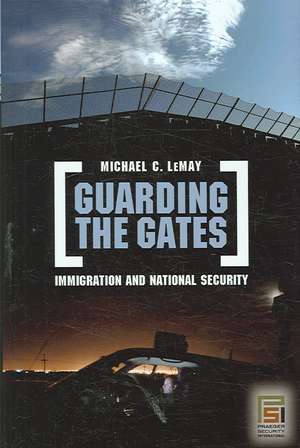


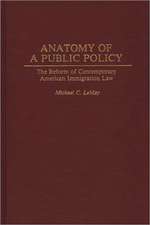
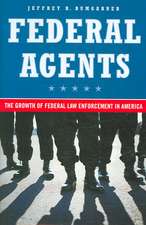

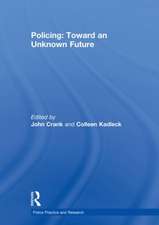

![Cengage Advantage Books: Clashing Values in the Administration of Public Policy (with Infotrac) [With Infotrac]](https://i2.books-express.ro/bt/9780534601379/cengage-advantage-books.jpg)





